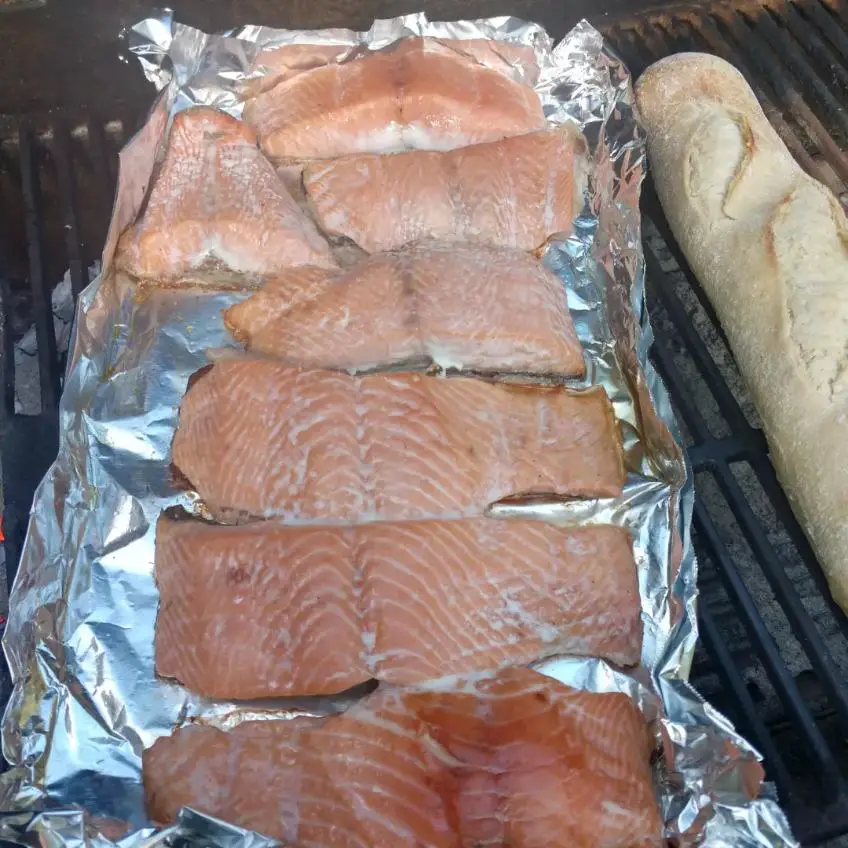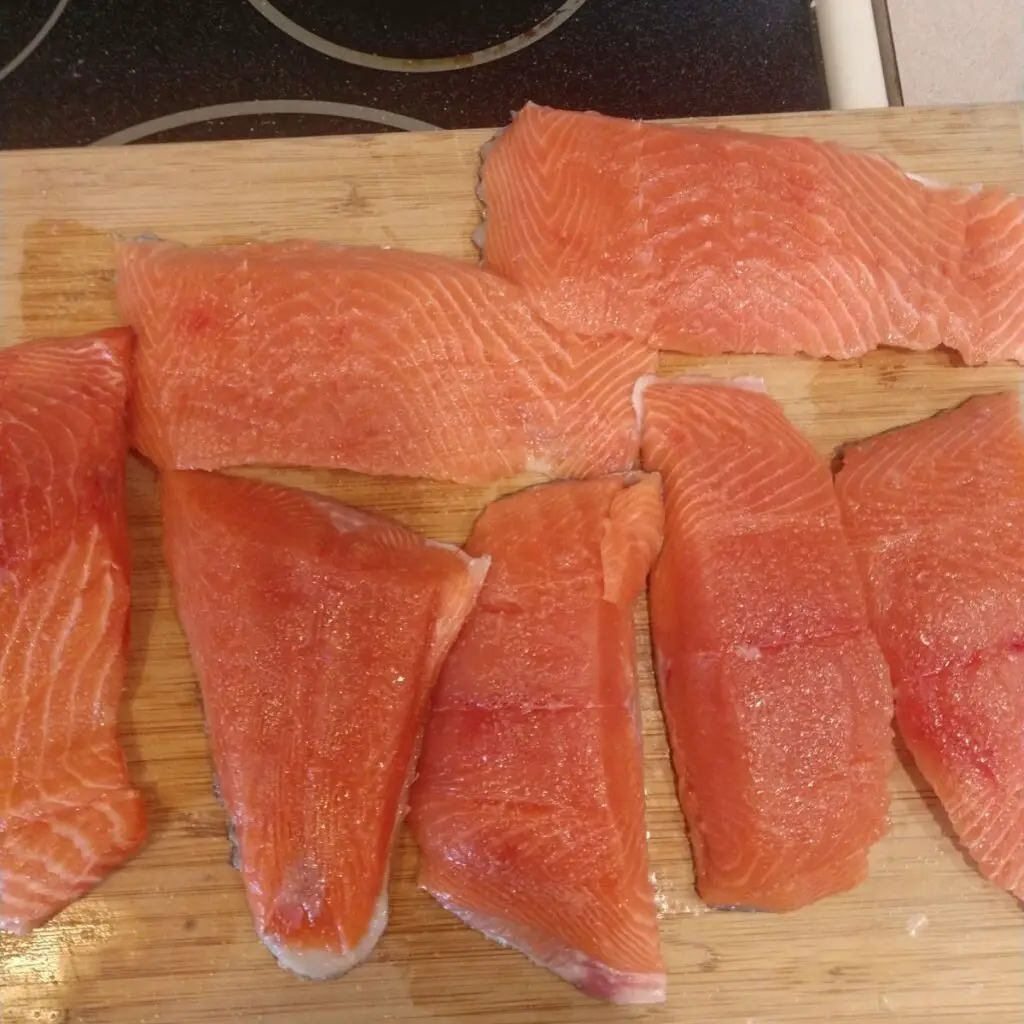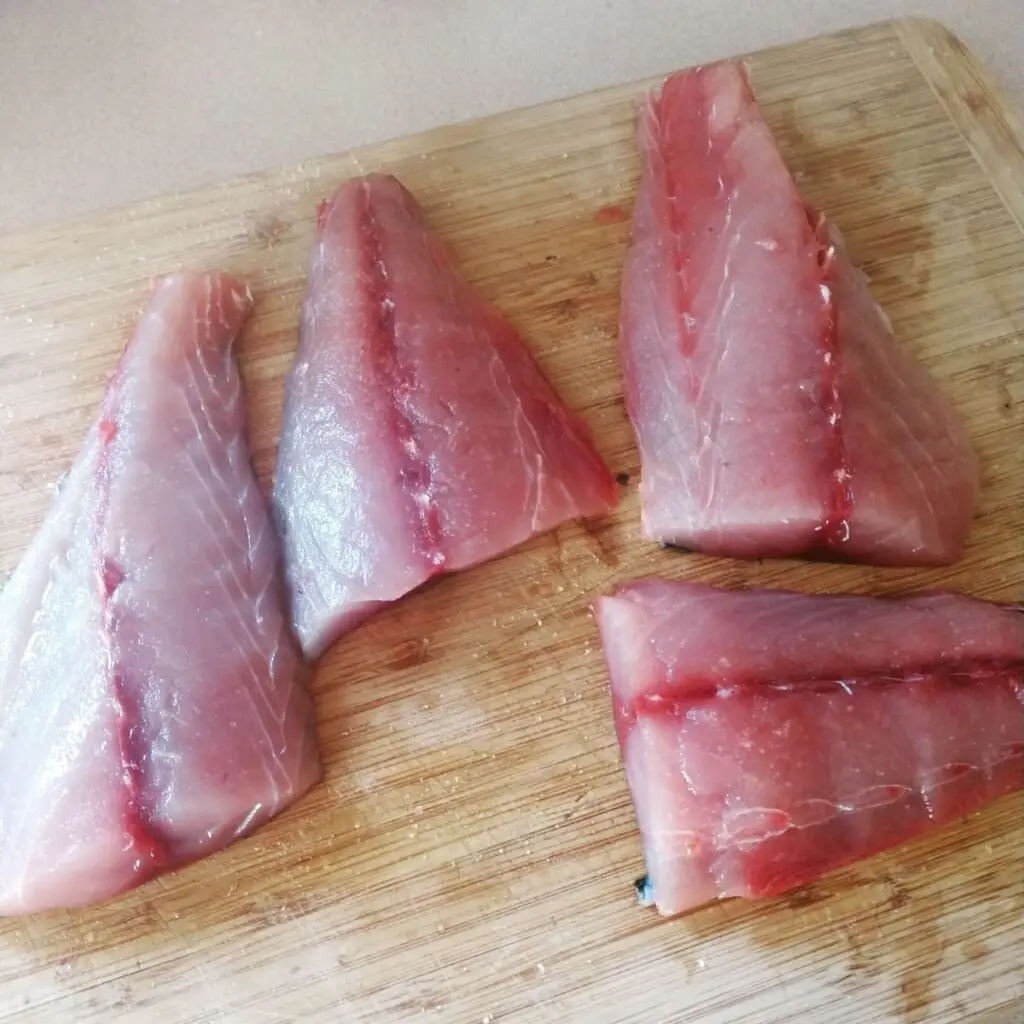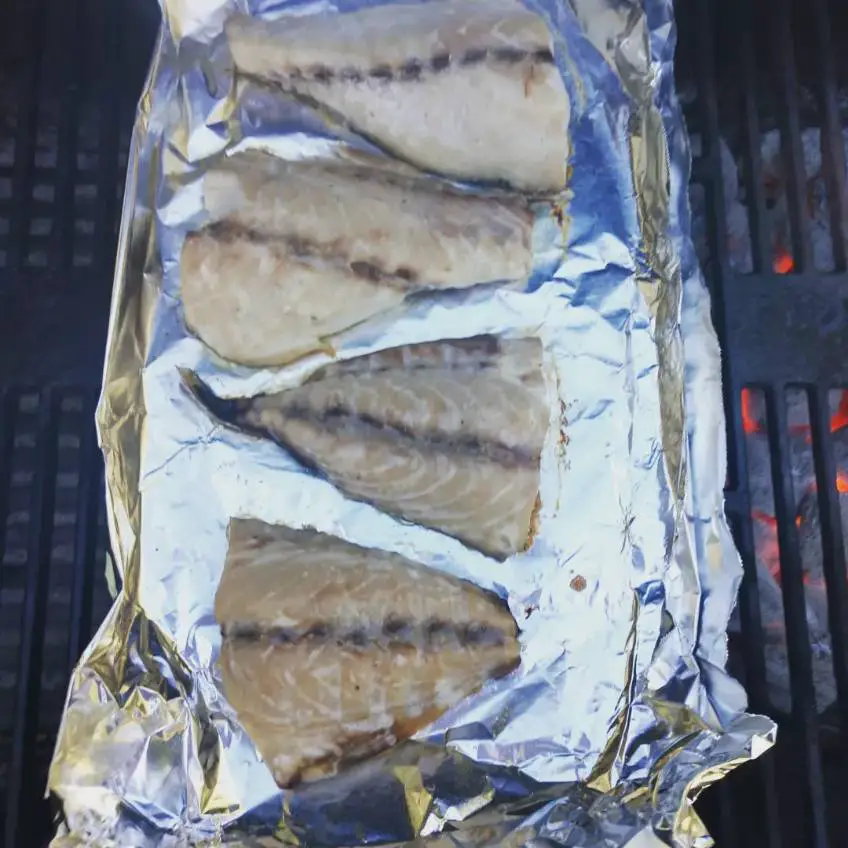
Shioyaki means “salt grilled” in Japanese. Shio = salt and yaki = grilled and the way it brings the natural flavor out of salmon and other fish is simply amazing!
This blog post breaks it down in a super easy way for you to make your own Shioyaki Salmon or other type of fish.
The Shioyaki Way With Fish

There are obviously an infinite number of ways to prepare fresh fish, however, the Shioyaki method is one of the absolute simplest, and in my opinion, one of the tastiest at the same time. The method comes from Japan, which is unsurprisingly one of the top countries in the world for fish consumption. They probably know what they’re doing, right?
Shioyaki only requires a few ingredients:
- – Sea salt
- – Sake
- – Lemon slices
- – Soy sauce and grated daikon (for dipping, but it’s not explicitly necessary)
There are a lot of recipes out on the internet for this, some require overnight preparation. But I’m here to tell you that you don’t need to do this overnight, you only need 20 minutes. No more, no less.
Currently, I’ve only tried this method on mackerel and salmon, but I feel like it would work with just about any type of fish.
Preparing the Fish

The first thing you’ll need is a few fillets of fresh fish, mackerel, or salmon. If you use salmon and the fillets are really thick (like with King salmon), you’ll need to cut them into roughly 2-3 inch wide pieces. To do this, hold your (hopefully super sharp) knife at an angle against the fillet and cut them into 2-3 inch wide pieces. If your fillets are relatively thin, such as with Coho, Sockeye, or most mackerel, then you can leave them intact.
Pat the fillets or pieces dry with a paper towel, then add however much sake you think you’ll need to a measuring cup or small bowl. Don’t buy expensive sake for this, it’s not a marinade. The typical dry sake you see at a regular grocery store is fine.
Hold your fillet over the sink, and then pour the sake over it. You’re essentially “washing” the fillet with the sake. Set the fillet on a cutting board and repeat with any additional fillets or pieces. Pat the fillets dry on both sides.
Next up, get your sea salt. It should be medium to fine grain so that it will properly coat the fish. There’s no set amount, but you should use a generous amount on BOTH sides of the fish, enough to evenly coat the entire fillet with a thin layer. Don’t worry about whether the fish will be too salty, it won’t be.
Now, set your timer for 20 minutes. Make sure to actually set the timer, you don’t want to go over or under.
After the 20 minutes, pat the fish dry on both sides, then place it on a piece of tin foil for the grill.
Grilling the Fish

Now, in this house, we prefer charcoal grilling as it’s the wood that makes it good. You won’t get any additional flavor from gas alone. However, regardless of what type of grill you’re using, prepare it for indirect heat. Set the fillets or pieces on the tin foil on the “cold side” of the grill (I.e. not where the flames are lol). Close the lid.
Depending on the thickness and amount of your fish, the cooking process can take between 10 and 20 minutes. You may want to open the lid occasionally and check, but the good news about this method is that it’s fairly forgiving in terms of the fish’s doneness.
You may also need to turn the tinfoil around to ensure that it’s getting even heat on both sides (I.e. the side closest to the flames). Both mackerel and salmon are fatty fish, so when you start seeing the fat appear along the grains of the meat and it becomes mostly opaque, that’s when it’s done.
The Shioyaki method produces an almost lacquer finish where the meat grains are clearly visible.
Eating the Fish
The only thing this style of fish needs is a squeeze of lemon over the top, which adds a delicious citrus dimension to the taste of oil and salt. The taste of Shioyaki style fish is savory (the Japanese call it umami) with hints of salt and the natural oil of the fish. The mouthfeel is very buttery, especially with salmon. Even Pink salmon can taste great this way, using the Shioyaki method.
I mentioned earlier about soy sauce with grated daikon, that is a totally optional choice. My personal opinion is that it works better with mackerel, especially if you’re pairing it with rice. But the goal of this method is to bring out the natural flavor of the fish, so you can honestly pair it with anything you want. It doesn’t need to be Asian or Japanese.
The only thing you should definitely do is the lemon squeeze, that really makes the end result pop.
And that’s it!
Welcome to your new favorite way of preparing fresh fish.
Follow me @gunmetal98tj on Instagram for more awesome recipe ideas and free beer (pictures!)